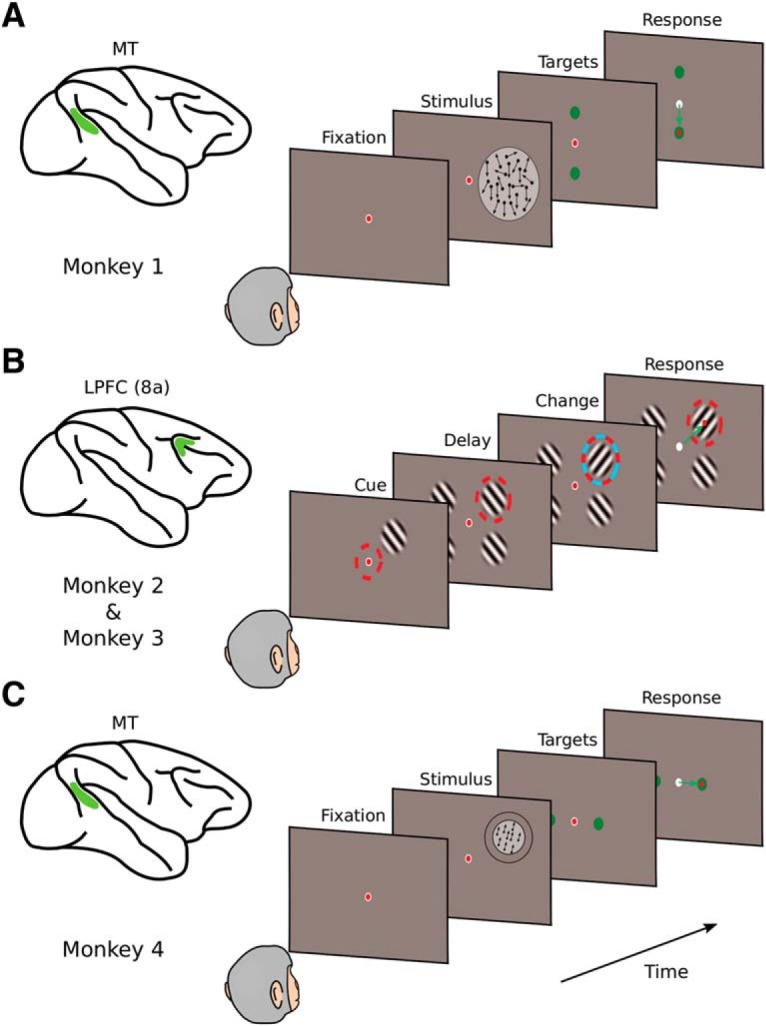Figure 2.

Three behavioral tasks used to test theoretical predictions in macaque monkeys. A, One monkey performed a coarse direction discrimination task (Monkey 1) while pairs of units were recorded in the MT area (Britten et al., 1992). After stimulus presentation (random dots moving toward the preferred or null direction of the neurons under study), the monkey reported the direction of motion by making a saccade to one of two targets. Difficulty was controlled by varying the percentage of coherently moving dots in the stimulus. B, Two monkeys performed an attentional task (Monkeys 2 and 3) while ∼50 units were recorded simultaneously from the LPFC (area 8a) (Tremblay et al., 2015). Four Gabor patterns were presented on the screen, and the task was to make a saccade to the attended location after a change in orientation of the cued Gabor. C, One monkey performed a fine direction discrimination task (Monkey 4) while ∼25 units were recorded simultaneously from area MT. After presentation of a fully coherent random dot stimulus, the monkey had to report whether dots moved leftward or rightward of vertical by making a saccade to one of two targets. Difficulty was controlled by making the left/right component of motion very small. For details, see Materials and Methods.
